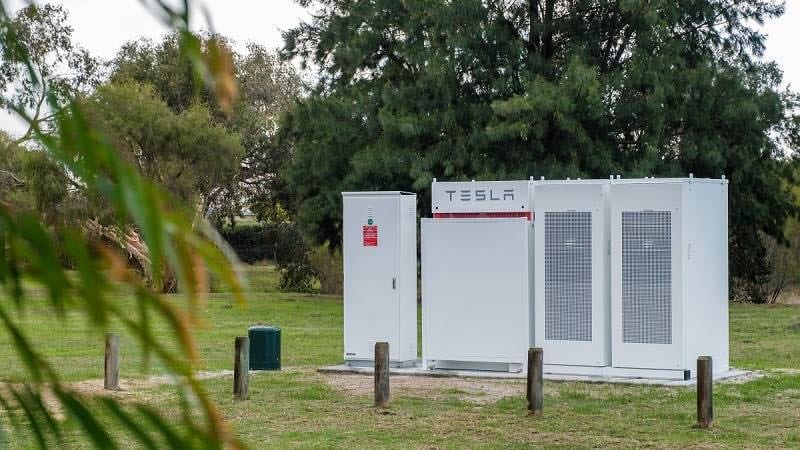Like many countries, energy prices in Australia have been impacted by the global energy crisis, pushing up electricity bills and energy customers are doing it tough. Adding a battery to rooftop solar PV allows households to not only make and use their own electricity, but store any spare for later when the sun’s gone down.
However, batteries are expensive and so the Federal Government program to roll out 400 community batteries is very welcome, allowing Australians to share in a local battery to manage electricity costs without the need to buy a battery themselves.
While this is a great initiative from the government that would support potentially more Australians to participate in the transition to clean energy, meet climate goals and reduce bills, the approach to roll these out is being compromised.
The Federal Government and the Australian Energy Regulator (AER) are currently considering granting electricity networks the right to own and operate community batteries, through a class waiver, which would allow the networks to apply for funding under the program, competing directly with any community groups and third parties that hope to own batteries.
The AER is involved because electricity networks are regulated monopolies and the AER oversee rigorous ringfencing rules to avoid distortion in competitive markets.
These rules operate to ensure the regulated electricity networks do not exercise their monopoly powers, by separating the regulated activity of running Australia’s electricity distribution networks from other activities and ensuring they can’t use the money they make from electricity customers to fund contestable services, such as community batteries.
Since network-owned and operated community batteries are an activity that will breach the Ringfencing Guideline, they need a waiver from the AER to bypass the ringfencing issue.
In November 2021, the AER published a new version of the ringfencing guideline for distribution electricity networks and in the notes that underpin those new rules, the AER extensively discuss their serious concerns with networks owning and operating batteries.
“Battery technology is still relatively new and emerging. There are a number of potential deployment models, one of which involves DNSP ownership. Relative to other models, DNSP ownership of batteries presents risks to competition that needs to be carefully considered … DNSPs are only one of many potential providers of community-scale batteries. It is therefore important that the regulatory framework supports a range of deployment models.”
We agree with the AER. The full value stack of community batteries can only be realised through third-party or community owned batteries and network ownership and operation of batteries is likely to diminish competition and innovation in this new and evolving market. And we are not alone.
The AER’s consultation on the proposal to relax the rules for networks to own and operate batteries received many responses from key stakeholders raising serious concerns with the class waiver and the lack of rigor on the conditions that would apply.
Interestingly, none of the networks or their industry body, Energy Networks Australia, who stand to gain most through the waiver, provided submissions in support of the approach, suggesting the AER consultation might just be a “tick the box” process for an already agreed outcome.
In our submission, Nexa Advisory notes that third parties, including community groups, do not have access to the network data that would support a robust business case for a third party-owned community battery. Only the networks have the data that indicates where there are constraints on the network and best locations for these batteries.
This places third parties and communities at a disadvantage in comparison to the networks as they are dependent on the network sharing its network data.
Discrimination is notoriously difficult to demonstrate under the Guideline given the broad nature of the obligation, but if the AER and the Commonwealth Government are genuinely interested in community-led batteries, then this information asymmetry needs to be urgently resolved, with the electricity networks sharing publicly the locations that maximise the opportunities for third-party and community-led batteries.
A number of the submissions made entirely reasonable suggestions to improve the transparency and rigor of the program, and that would deliver genuine community batteries that maximise the benefits and income opportunities for customers.
Networks play an important role and, in some locations, the networks may be the best party to deliver a battery. But the networks should be the “provider of last” resort, not the “first choice”.
The AER need to seriously consider whether the class waiver for the community battery program will ensure that energy consumers will be better off, now and in the future.
The Federal Government need to ensure that ARENA’s grant application process is transparent and open and not biased towards incumbents in order for this program to deliver on the stated outcomes that will genuinely help Australians manage their bills.
There is a serious risk, that by granting networks a class waiver and giving them further advantages over community groups to access the $224 million Federal Government program, community batteries won’t meet the policy intent of the Federal Government’s program and will not deliver full benefits to Australian customers or their communities.
Worse, it may result in adding 400 taxpayer funded batteries to the regulated asset base of electricity networks.
Stephanie Bashir is principal of Nexa Advisory.










